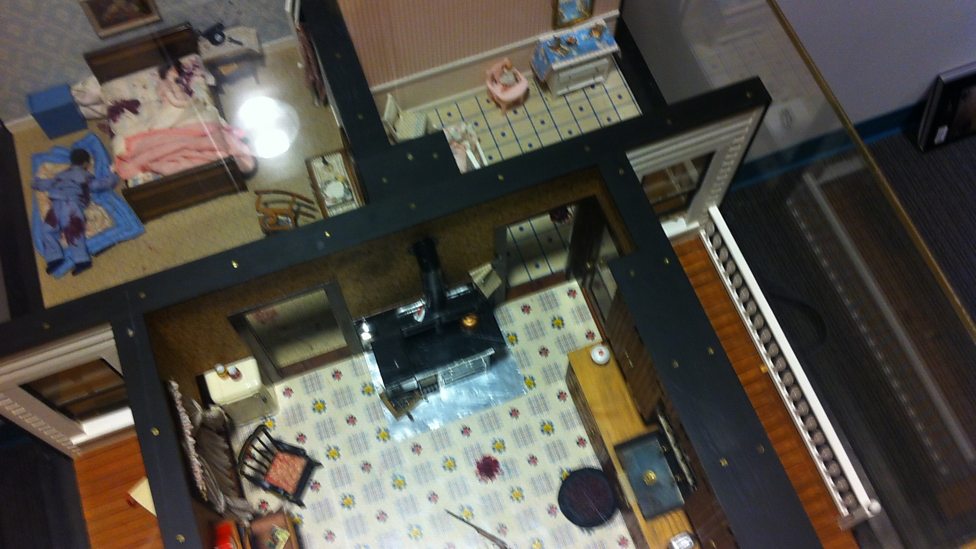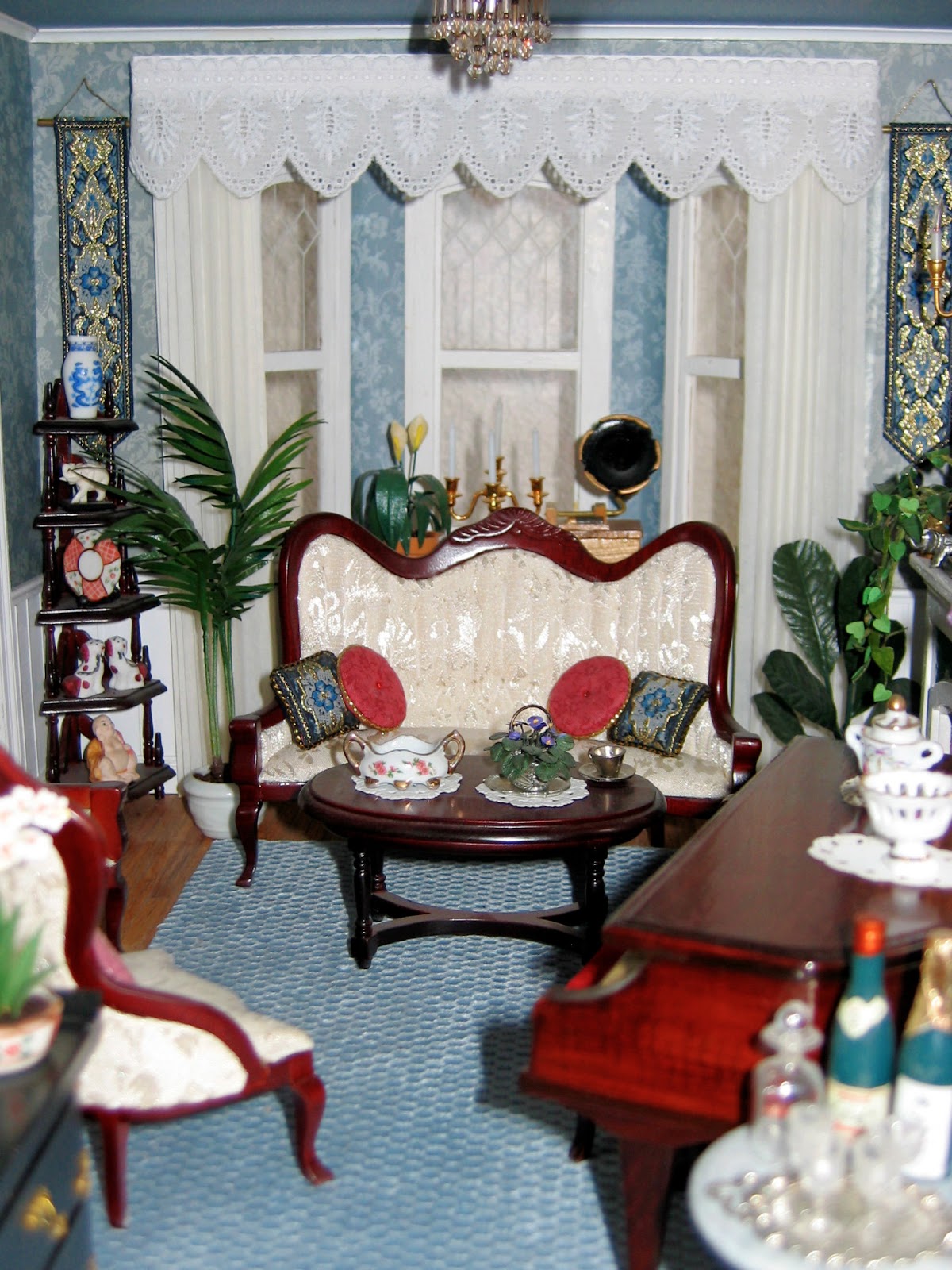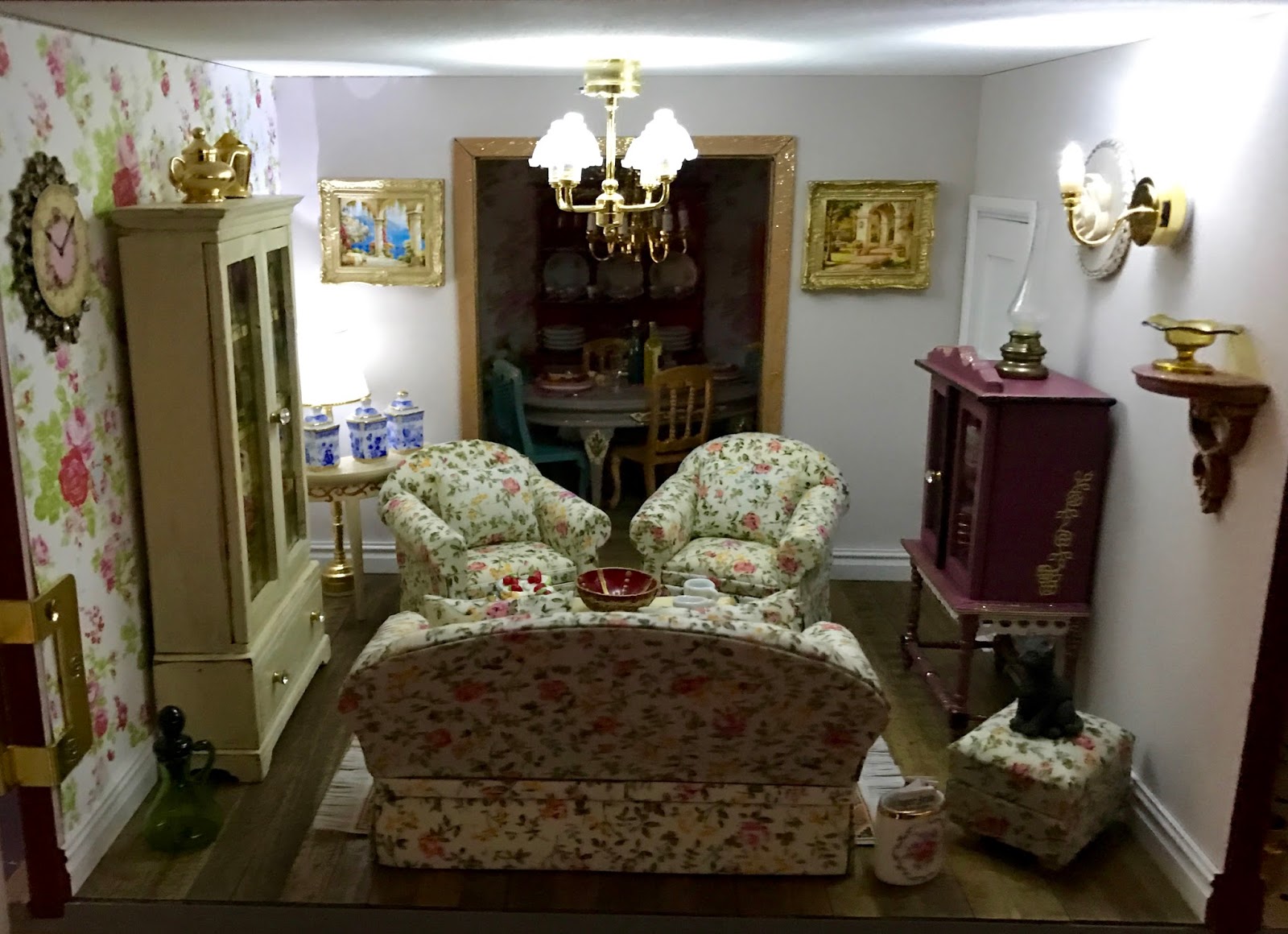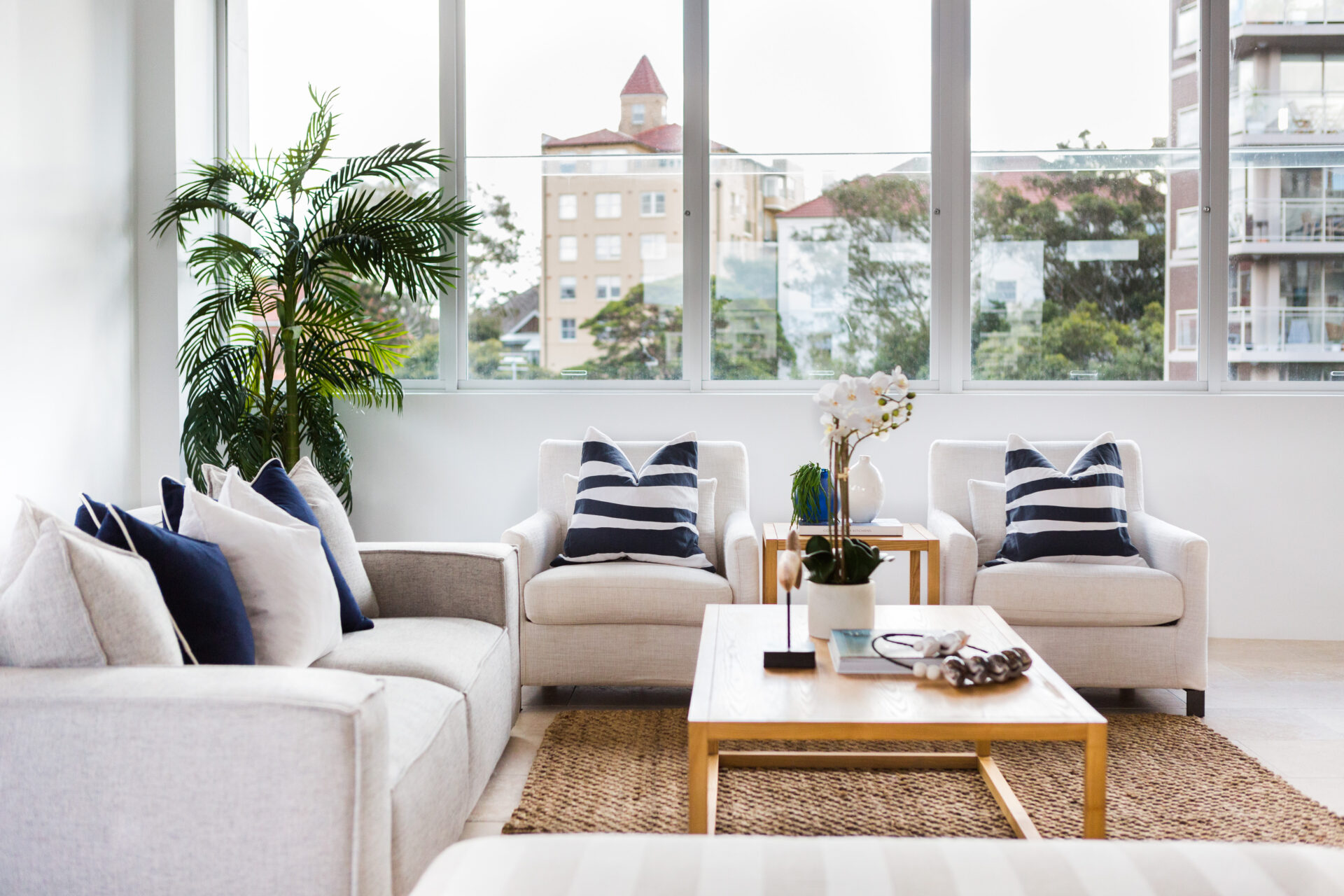The living room is often considered the heart of the home, a place where families gather and memories are made. But for one woman, this familiar setting became the inspiration for a unique and macabre project – the Nutshell Studies of Unexplained Death. Created by heiress and criminologist Frances Glessner Lee in the 1940s and 50s, these intricate crime scene dioramas were used to train detectives in the art of forensic investigation. Each scene was meticulously crafted in 1:12 scale and depicted real-life cases of mysterious deaths, from murders to suicides to accidents.Living Room Nutshell Studies: Exploring the Fascinating World of Miniature Crime Scenes
Among the 20 dioramas created by Lee, four of them are set in living rooms. These miniature crime scenes are incredibly detailed, with hand-crafted furniture, tiny food items, and even working lights and doors. What makes them even more fascinating is the fact that they are based on real cases, with Lee using her knowledge of forensic science to make them as accurate as possible. One of the most well-known living room scenes is titled "Three-Room Dwelling," which depicts a murder-suicide between a husband and wife. The scene is filled with clues, from a broken lamp to a gun hidden under a pillow, challenging investigators to unravel the mystery.The Nutshell Studies of Unexplained Death: A Closer Look
Lee's miniatures were not just exercises in craftsmanship and attention to detail, but also in creating an accurate representation of a crime scene. The living room was a common setting for these dioramas because it offered a variety of elements to work with – furniture, decor, and potential weapons. It also allowed for different scenarios to be explored, from accidental deaths to premeditated murders. Through these miniature living rooms, Lee was able to teach detectives how to approach a crime scene, gather evidence, and analyze it to solve a case. Her attention to detail and dedication to accuracy made these dioramas valuable tools in forensic training.The Living Room as a Crime Scene
Lee's Nutshell Studies are not only fascinating in their subject matter, but also in the level of skill and craftsmanship required to create them. She spent months researching each case and meticulously crafting each element of the dioramas, from the wallpaper to the clothing on the dolls. The result is a work of art that also serves a scientific purpose. Today, the Nutshell Studies of Unexplained Death are still used in forensic training, and some have even been put on display in museums, allowing the public to marvel at these tiny crime scenes. Lee's legacy continues to inspire and educate, highlighting the importance of attention to detail in solving crimes.The Miniature Living Room: A Work of Art and Science
The idea of using dolls and dollhouses to depict gruesome crime scenes may seem unsettling to some, but for Lee, it was a way to make these cases more approachable and understandable. By creating a miniature world, she was able to remove the emotional element and focus on the evidence and facts of the case. Lee's use of dolls also allowed her to create a sense of perspective, with different figures representing different heights and positions in the scene. This attention to detail was crucial in making the dioramas as accurate as possible.Dollhouse Living Room Murder: Bringing a Darker Side to Miniature Play
Frances Glessner Lee passed away in 1962, leaving behind a legacy that continues to fascinate and educate. Her Nutshell Studies of Unexplained Death, and specifically the living room scenes, have captured the imagination of many and shed light on the importance of forensic science in solving crimes. So the next time you step into your living room, take a moment to appreciate the little details and imagine what it would look like in 1:12 scale. You may just find yourself looking at your familiar surroundings in a whole new light.The Nutshell Studies of Unexplained Death Living Room: A Legacy That Lives On
The Nutshell Studies of Unexplained Death may have been created over 70 years ago, but their impact and relevance in the world of crime scene investigation is still felt today. These miniature living rooms continue to inspire and educate, reminding us of the importance of attention to detail and critical thinking in solving mysteries. So the next time you watch a crime show or read a mystery novel, remember the incredible work of Frances Glessner Lee and her Nutshell Studies of Unexplained Death. They may be small in size, but their impact on the world of forensic science is immeasurable.Living Room Crime Scene Investigation: The Tiny World of the Nutshell Studies
One of the most intriguing aspects of the Nutshell Studies of Unexplained Death is the fact that they depict real cases. Lee used her knowledge of forensic science and her imagination to recreate these scenes, giving us a glimpse into the mind of a killer and challenging us to solve the crime. Through these miniatures, we are able to see the crime scene from a different perspective and piece together the evidence to come to a conclusion. It's a testament to Lee's creativity and dedication to her craft.Miniature Living Room Crime Scene: A Glimpse into the Mind of a Killer
The Nutshell Studies of Unexplained Death may seem like a morbid hobby, but for Frances Glessner Lee, they were a way to make a difference in the world of forensic science. Her dedication and attention to detail have left a lasting impact on the field, inspiring future generations of investigators. So the next time you're looking for a good mystery to solve, don't overlook the tiny world of the Nutshell Studies – you never know what clues you may find in a miniature living room.Living Room Murder Mystery: Solving Crimes in Miniature
Frances Glessner Lee's Nutshell Studies of Unexplained Death are more than just miniature crime scenes – they are a perfect blend of art and science. From the intricate details of the furniture and decor to the scientific accuracy of the evidence, these dioramas are a testament to Lee's skill and passion for both fields. Whether you are an art lover or a science enthusiast, the Nutshell Studies are sure to capture your attention and leave you in awe of the incredible work that went into creating them.Nutshell Studies of Unexplained Death Living Room: Where Art and Science Collide
The Importance of House Design: How the Living Room Nutshell Studies Enhance Our Understanding

The Role of House Design in Our Lives
 When we think about the spaces we spend the most time in, our homes surely come to mind. Our houses are not just shelter, but they are also a reflection of our personalities and lifestyles. That's why house design is crucial in creating a comfortable and functional living space. The way we design our homes can greatly impact our daily lives, affecting our mood, productivity, and overall well-being.
House design is an art form
, where every element serves a purpose and contributes to the overall aesthetic. It involves a careful balance of functionality, space, and aesthetics to create a harmonious living environment. And the living room, being the heart of the home, is one of the most important spaces to get right.
When we think about the spaces we spend the most time in, our homes surely come to mind. Our houses are not just shelter, but they are also a reflection of our personalities and lifestyles. That's why house design is crucial in creating a comfortable and functional living space. The way we design our homes can greatly impact our daily lives, affecting our mood, productivity, and overall well-being.
House design is an art form
, where every element serves a purpose and contributes to the overall aesthetic. It involves a careful balance of functionality, space, and aesthetics to create a harmonious living environment. And the living room, being the heart of the home, is one of the most important spaces to get right.
The Living Room Nutshell Studies: A Unique Approach to House Design
 The Living Room Nutshell Studies, created by renowned designer Frances Glessner Lee, provide a unique and insightful perspective on house design. These miniature crime scene dioramas were originally created as training tools for police officers, but they also offer valuable insights into the design and functionality of the living room.
The Nutshell Studies showcase the importance of attention to detail
in house design. Each diorama meticulously replicates a real-life living room, complete with furniture, decor, and even tiny household items. They highlight the importance of proper lighting, furniture placement, and efficient use of space in creating a functional and visually appealing living room.
The Living Room Nutshell Studies, created by renowned designer Frances Glessner Lee, provide a unique and insightful perspective on house design. These miniature crime scene dioramas were originally created as training tools for police officers, but they also offer valuable insights into the design and functionality of the living room.
The Nutshell Studies showcase the importance of attention to detail
in house design. Each diorama meticulously replicates a real-life living room, complete with furniture, decor, and even tiny household items. They highlight the importance of proper lighting, furniture placement, and efficient use of space in creating a functional and visually appealing living room.
Enhancing Our Understanding of House Design
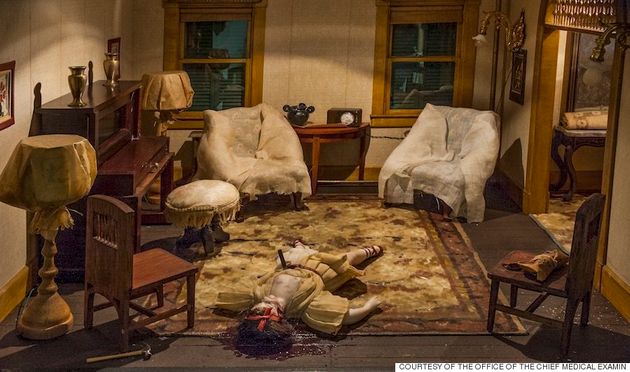 The Living Room Nutshell Studies also shed light on the psychology behind house design. By studying the dioramas, we can understand how different design elements can affect our perception and emotions. For example, the placement of a chair or the color of a wall can influence our mood and behavior in a space.
Through the Nutshell Studies, we can learn how to create a living room that not only looks good but also feels good to be in
. They teach us the importance of balance, proportion, and functionality in house design. By incorporating these principles into our own living rooms, we can create a space that truly reflects our individual style and enhances our well-being.
In conclusion, house design goes beyond just aesthetics; it plays a significant role in our daily lives. The Living Room Nutshell Studies offer a unique and valuable perspective on house design, helping us understand the importance of attention to detail, psychology, and functionality. By incorporating these learnings into our own living spaces, we can create a home that is not only beautiful but also functional and comfortable.
The Living Room Nutshell Studies also shed light on the psychology behind house design. By studying the dioramas, we can understand how different design elements can affect our perception and emotions. For example, the placement of a chair or the color of a wall can influence our mood and behavior in a space.
Through the Nutshell Studies, we can learn how to create a living room that not only looks good but also feels good to be in
. They teach us the importance of balance, proportion, and functionality in house design. By incorporating these principles into our own living rooms, we can create a space that truly reflects our individual style and enhances our well-being.
In conclusion, house design goes beyond just aesthetics; it plays a significant role in our daily lives. The Living Room Nutshell Studies offer a unique and valuable perspective on house design, helping us understand the importance of attention to detail, psychology, and functionality. By incorporating these learnings into our own living spaces, we can create a home that is not only beautiful but also functional and comfortable.



